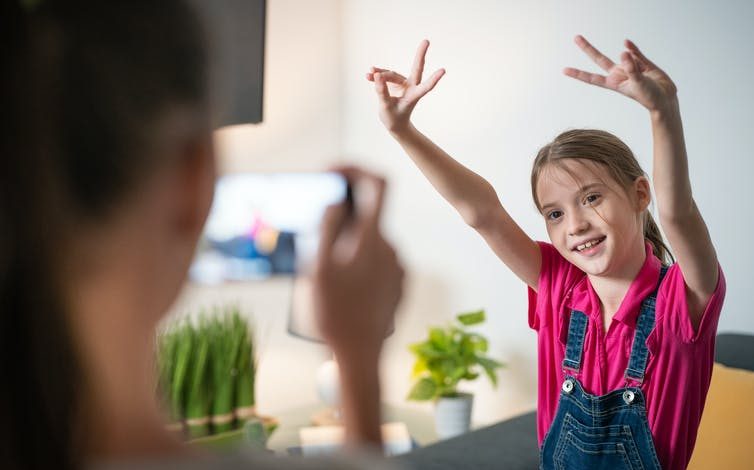
It is estimated around half the world’s students’ schools remain shut down. All told, this has been a potentially damaging disruption to the education of a generation.
But one of the few positive outcomes from this experience is an opportunity to rethink how digital technologies can be used to support teaching and learning in schools.
Our collective experiences of remote schooling offer a fleeting opportunity for schools to think more imaginatively about what “digital education” might look like in the future.
This is not to echo the hype (currently being pushed by many education reformers and IT industry actors) that COVID will prove a tipping-point after which schools will be pushed fully into digital education.
On the contrary, the past six months of hastily implemented emergency remote schooling tell us little about how school systems might go fully virtual, or operate on a “blended” (part online, part face-to-face) basis. Any expectations of profiting from the complete digital reform of education is well wide of the mark.
Instead, the most compelling technology-related lessons to take from the pandemic involve the informal, improvised, scrappy digital practices that have helped teachers, students and parents get through school at home.
Technology during the pandemic
All over the world, school shutdowns have seen teachers, students and families get together to achieve great things with relatively simple technologies. This includes the surprising rise of TikTok as a source of informal learning content. Previously the domain of young content creators, remote schooling saw teachers of all ages turn to the video platform to share bite-size (up to one minute) chunks of teaching, give inspirational feedback, set learning challenges or simply show students and parents how they were coping.
TikTok also been used as a place for educational organisations, public figures and celebrity scientists to produce bespoke learning content, as well as allowing teachers to put together materials for a wider audience.
Even principals have used it to keep in contact with their school — making 60-second video addresses, motivational speeches and other alternatives to the traditional school assembly speech.
Classes in some countries have been run through WhatsApp, primarily because this was one platform most students and families had access to, and were used to using in their everyday lives.
Elsewhere, teachers have set up virtual BitMoji classrooms featuring colourful backdrops and cartoon avatars of themselves. These spaces act as a friendly online version of their familiar classroom space for students to check in and find out what they should be learning, access resources and temporarily feel they were back at school.
Some teachers have worked out creative ways of Zoom-based teaching. These stretch beyond the streamed lecture format and include live demonstrations, experiments, and live music and pottery workshops.
Social media, apps and games have proven convenient places for teachers to share insights into their classroom practice, while students can quickly show teachers and classmates what they have been working on.
These informal uses of digital media have played an important role in boosting students, teachers and parents with a bit of human contact, and additional motivation to connect and learn.
So, what now?
All this will come as little surprise to long-term advocates of popular forms of digital media in education. There is a sound evidence base for the educational benefits of such technology.
For example, a decade’s worth of studies has developed a robust framework (and many examples) of how students and educators can make the most of personal digital media inside and outside the classroom. These include allowing students to participate in online fan-fiction writing communities, digital journalism, music production and podcasting.
The past ten years has also seen a rise in e-sports — where teams of young people compete in video games.
This stresses the interplay between digital media, learning driven by students’ interests and passions, and online communities of peers. Informal digital media can be a boon for otherwise marginalised and disadvantaged youth and allowing students to find supportive communities of like-minded peers regardless of their local circumstances.
Australia continues to be one of the few countries in the world where classroom use of smartphones is banned by some governments. Some of the most popular social media platforms, content creation apps, and open sites such as YouTube remain filtered and blocked in many schools too.
At the same time, official forms of school technology are increasingly criticised for being boring, overly-standardised, and largely serving institutional imperatives, rather than pitched toward the interests of students and teachers.
Concerns are growing over the limited educational benefits of personalised learning systems, as well as the data and privacy implications of school platforms and systems such as Google Classroom.
The past six months have seen many schools forced to make the best of whatever technologies were immediately to hand. Previously reticent teachers now have first-hand experience of making use of unfamiliar technologies. Many parents are now on board with the educational potential of social media and games. Most importantly, students have been given a taste of what they can achieve with “their” own technology.
With US schools now exploring the benefits of establishing official TikTok creation clubs to enhance their video-making skills, it might be time for Australian educators to follow suit. Let’s take the opportunity to re-establish schools as places where teachers, students and families can work together to creatively learn with the devices and apps most familiar to their everyday lives.![]()









